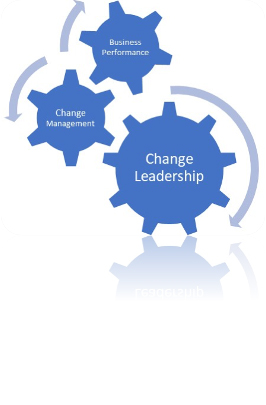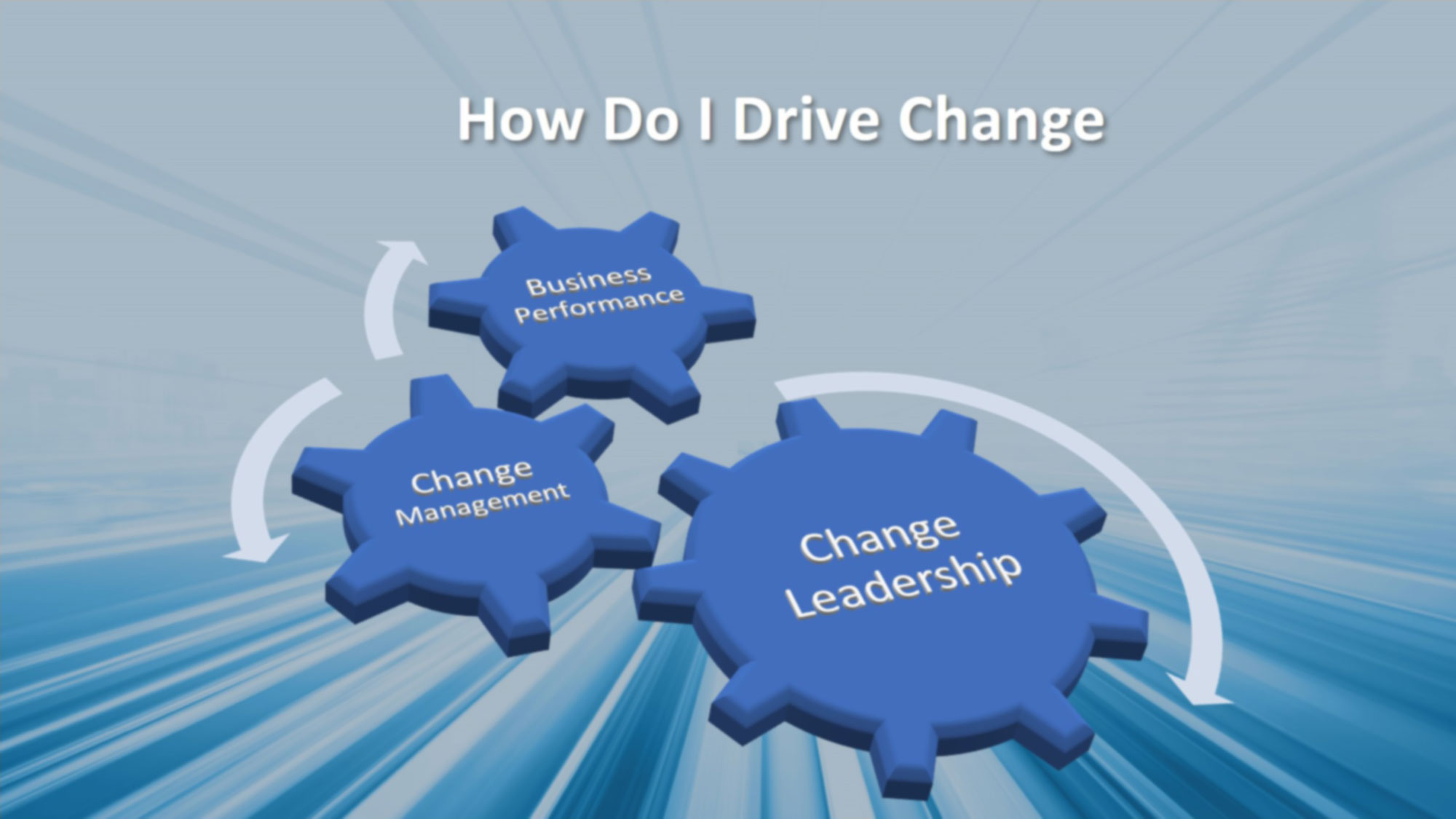Within Competitive Business Solutions (CBS), we actively debate over the difference between “Change Leadership” and “Change Management”. This debate plays out in industry. In fact, I would go as far as to say that most executives practice Change Leadership but stop short of requiring or driving the necessary tactics of Change Management, thus leaving their staff to struggle to achieve ambiguous expectations. In the end, both the executives and staff are left frustrated, and worse, with no discernable improvements in the overall performance of the business. This blog will explore the differences between Change Management and Change Leadership and what you, as a leader, can do to drive real sustainable change that will result in overall business improvement.
To start, it’s important to distinguish between Change Management and Change Leadership. Change Management is most often thought of as those definable processes that help manage an organization’s transformation over time. Change Management processes focus on keeping the organization or business in control and manageable during some level of transition. These processes typically include activities like communications, workforce development plans, employee surveys, corrective actions and many other similar processes. Change Leadership, on the other hand, involves much bigger, bolder visions developed and communicated by the executives of the company. These types of changes tend to be not as controlled and, in fact, less predictable as to their outcomes. Dr. John Kotter, one of the leading authorities on business, leadership and change, likens Change Leadership “to putting an engine on the whole change process.”
So, let’s consider a few questions:
- First, can you have effective Change Leadership without competent Change Management?
- Second, how does one become a more effective Change Leader?
- Third, how does Change Leadership play a critical role in today’s business outlook?
In this blog, we’ll explore the first question, and in subsequent blogs, we’ll delve deep into the other two.
Change Leadership Versus Change Management

Bold Change Leadership
Consider this real-world example that occurred several years ago when one of our clients decided to reinvent their production strategy by creating strategic technology centers for manufacturing. The technology centers were established to resolve the problem of redundant capabilities throughout the client’s US sites—redundancies which had come about through years of acquisitions. In some cases, as many as a dozen manufacturing sites were consolidated into one. Overall, six centers were created, each representing a specific manufacturing technology.
The strategic change of consolidating to a single technology center was profound. It required different legacy businesses to work closely together to effectively transition and consolidate the intellectual property and manufacturing “know-how” to one location. All the businesses involved in producing the technology in question were required to participate in the consolidation into each of the centers. The transfer of work meant a loss of jobs in one business and an increase in another. Although this story is specific, it is certainly not unique from a change standpoint, and hopefully, it creates a relatable experience for you.
What Happened to the Change Management?
Like many examples of bold changes, there was extreme resistance within the client’s organization and across the businesses. Transfer teams representing the technology centers were established with the charter of executing the consolidation. The impact of the organizational resistance hit the transfer teams almost on day one. When the transfer teams went out to meet with the other businesses to discuss consolidation, they were often met with anger or silent resistance and prevented from entering the facilities. Quite simply, the transfer teams were locked out and prevented from doing their job. What everyone quickly learned was that executive direction does not always guarantee buy-in.
After witnessing this kind of resistance, the lesson learned from a Change Leadership perspective was: even when directed by the CEO, “Just because I say so” was not sufficient. As a result, the transfer activity took months longer than originally planned and even when completed, the technology centers struggled to be effective because of limited sharing of knowledge across the company. If each of you stop and think about your own examples, you will likely have experienced bold changes directed by executives that met severe resistance within the organization.
Applying the model of the interlocking gears to the above scenario, you can quickly surmise that although there was a bold strategy that required Change Leadership, the Change Management gear was not put into motion. The Change Management strategy was not defined or even contemplated prior to the technology teams’ struggle to execute the consolidation strategy into the technology centers. The teams were left to either fail, or more likely, escalate the problems to the executive staff. We can conclude that the development of the Change Management strategy was critical and should have been established before launching into the actual effort of consolidating work to the technology centers.
As evident through this example, both Change Leadership and Change Management go hand-in-hand. Change Leadership drives the interlocking gears, and Change Management executes the mechanics. Can you drive the third gear—business performance—without effective Change Leadership and Change Management? The answer is no. Yet, more often than not, the interplay between the Change Leadership and Change Management is not clearly understood and strategized. None of this is rocket science. It is the responsibility of the leader and the broader team to envision the different likely outcomes and develop strategies from Change Leadership and Change Management standpoints. The next question, therefore, is to ask: how does one become a more effective Change Leader? We will explore this question in our next blog post.



